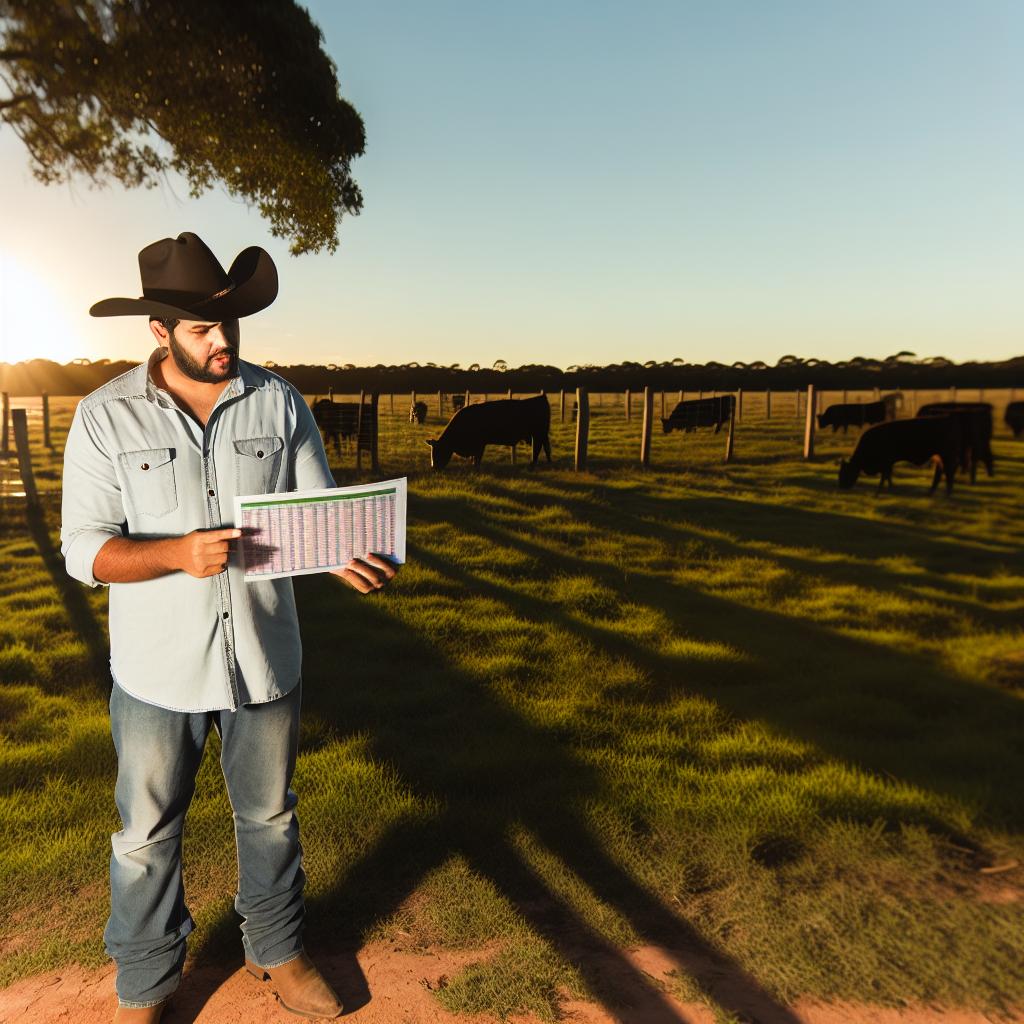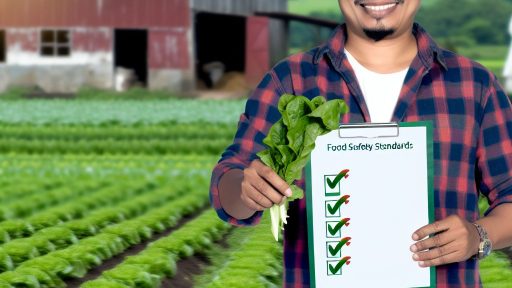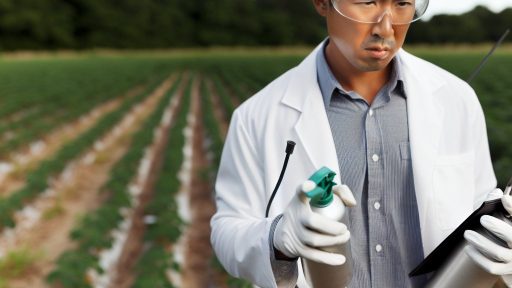Introduction to Agricultural Insurance and Its Importance for Livestock Farmers
Agricultural insurance plays a crucial role in protecting livestock farmers from financial loss.
Farmers face numerous risks, such as disease outbreaks or extreme weather conditions.
These uncertainties can severely impact livestock health and productivity.
Consequently, having insurance is vital for farmers to maintain their operations.
Insurance provides a safety net during unexpected events.
It helps cover costs related to veterinary care, replacement animals, and loss of income.
Moreover, farmers can invest in preventive measures knowing they are insured.
This approach ultimately leads to a more sustainable farming practice.
Understanding Different Types of Livestock Insurance
Farmers may choose from various insurance options tailored to their needs.
First, we have mortality insurance, which covers the death of livestock.
This type of insurance is essential for farmers relying heavily on their animals for income.
Next is liability insurance, protecting farmers from legal claims related to livestock injuries.
This coverage is especially critical for those who sell or show their animals.
Additionally, there is food safety insurance, ensuring compliance with health regulations.
Farmers should assess their specific risks to choose the right coverage.
Transform Your Agribusiness
Unlock your farm's potential with expert advice tailored to your needs. Get actionable steps that drive real results.
Get StartedThe Role of Insurance in Financial Planning
Insurance significantly influences financial planning for livestock farmers.
It helps secure loans and may lower interest rates with lenders.
Besides, having insurance boosts credibility with suppliers and customers alike.
It demonstrates a commitment to responsible farming practices.
Furthermore, insurance mitigates risks, allowing farmers to focus on growth.
They can invest in expanding their herds without fearing a total loss.
Integrating insurance into financial plans strengthens farm viability.
Challenges in Acquiring Agricultural Insurance
Despite its benefits, acquiring agricultural insurance can be challenging.
Many farmers face high premiums, which can strain budgets.
Additionally, coverage terms may vary widely among providers.
Farmers often find it difficult to navigate the complexities of policies.
Moreover, some may lack access to insurance providers in rural areas.
These challenges highlight the need for better education and resources.
Farmers should collaborate with industry experts to gain insights into the best practices.
Significance of Livestock Insurance for Farming Success
Agricultural insurance is fundamental for livestock farmers’ success.
It provides essential coverage against various risks inherent in farming.
Understanding the types of insurance available helps farmers make informed decisions.
Effective insurance planning leads to more stable and profitable operations.
Understanding Different Types of Livestock Insurance Policies
Health Coverage Insurance
Health coverage insurance protects livestock against illnesses and injuries.
This policy covers veterinary expenses and medical treatments.
Farmers can choose between basic and comprehensive coverage options.
Additionally, regular health check-ups can reduce claims.
Farmers should consult their veterinarian for suitable coverage levels.
Mortality Insurance
Mortality insurance offers compensation for livestock death.
Showcase Your Farming Business
Publish your professional farming services profile on our blog for a one-time fee of $200 and reach a dedicated audience of farmers and agribusiness owners.
Publish Your ProfileIt typically covers deaths due to accidents, disease, and natural causes.
This policy provides peace of mind for livestock farmers.
Farmers must document their livestock’s value for accurate compensation.
Moreover, timely policy renewals ensure continuous coverage.
Liability Insurance
Liability insurance protects farmers against legal claims.
This policy covers accidents or injuries caused by livestock.
Farmers face potential lawsuits from injured parties or property damage.
Having liability insurance safeguards financial stability.
Additionally, it fosters trust within the community.
Income Protection Insurance
Income protection insurance compensates for loss of revenue.
This policy is beneficial during adverse weather events or disease outbreaks.
Farmers can secure a percentage of lost income during such times.
Effective risk management strategies enhance farm resilience.
Furthermore, emergency funds can provide additional financial support.
Multi-Peril Insurance
Multi-peril insurance provides broad coverage against various risks.
This policy addresses multiple threats to livestock operations.
It includes coverage for disease, accidents, and natural disasters.
Farmers benefit from a comprehensive approach to risk management.
Furthermore, it simplifies claims processing for diverse incidents.
Premium Subsidies and Assistance Programs
Government programs often offer premium subsidies to farmers.
These programs make livestock insurance more affordable and accessible.
Farmers should research available assistance in their regions.
Engaging with local agricultural organizations can provide valuable insights.
Moreover, staying informed about changes in policies can help leverage benefits.
Factors to Consider When Choosing Insurance for Livestock
Understanding Coverage Types
Different livestock insurance policies cover various risks.
For instance, mortality insurance protects against animal loss.
Additionally, liability insurance guards against third-party claims.
Comprehensive plans often combine these elements.
Evaluating Your Livestock Needs
Your specific needs will dictate the right insurance type.
Consider the types of livestock you own.
For example, cattle may require different coverage than poultry.
Assess your operations to understand potential risks.
Considering Policy Limits and Deductibles
Every insurance policy has limits and deductibles.
Understand how these factors affect your coverage.
Higher limits may provide greater peace of mind.
However, higher deductibles can increase out-of-pocket expenses.
Researching Insurance Providers
Not all insurance companies offer the same quality of service.
Look for providers with experience in agricultural insurance.
Check their reputation and customer reviews online.
Your goal is to find a trustworthy provider.
Showcase Your Farming Business
Publish your professional farming services profile on our blog for a one-time fee of $200 and reach a dedicated audience of farmers and agribusiness owners.
Publish Your ProfileAssessing Premium Costs
Insurance premiums can vary significantly between providers.
Compare quotes to find the best rates.
Nonetheless, don’t solely focus on cost.
Coverage quality is equally important when making a decision.
Understanding Claim Processes
Familiarize yourself with the insurance claim process.
Some policies offer streamlined procedures for quick payouts.
Delayed claims can disrupt your farming operations.
Look for providers known for their efficient claim handling.
Examining Additional Coverages
Add-on coverages can enhance your insurance policy.
Consider options like natural disaster coverage.
These can offer extra protection in uncertain times.
Evaluate how much additional coverage fits your needs.
Reviewing and Updating Policies Regularly
Your farming operation can change over time.
Regularly review and update your policies as needed.
This ensures that you maintain appropriate coverage levels.
Address any changes in the size or type of your livestock.
Find Out More: Rural Development Policies: Empowering Farmers and Communities
Common Risks Faced by Livestock Farmers and How Insurance Can Mitigate Them
Natural Disasters
Natural disasters pose significant risks for livestock farmers.
Events such as droughts and floods can severely impact their operations.
Insurance can cover losses caused by these unforeseen circumstances.
It provides farmers with financial support to recover after such events.
Animal Diseases
Animal diseases represent another major risk for livestock farmers.
Outbreaks can lead to substantial livestock losses and increased costs.
Insurance can help farmers manage expenses related to veterinary care.
It may also provide compensation for animals lost due to disease.
Market Fluctuations
Market fluctuations can greatly affect livestock farmers’ income.
Prices for meat and dairy products can vary unpredictably.
Insurance products can help mitigate financial losses from price drops.
This financial safety net allows for better planning and sustainability.
Theft and Biosecurity Risks
Theft is a growing concern for livestock farmers in many areas.
Insurance can provide coverage for stolen livestock and property.
Additionally, biosecurity risks can threaten animal health and farm viability.
Insurance can help address financial losses caused by biosecurity breaches.
Benefits of Agricultural Insurance
Investing in agricultural insurance offers multiple advantages to farmers.
It enhances financial stability in times of crisis.
Farmers can focus on their operations without constant worry.
Furthermore, insurance provides peace of mind, knowing they have support.
Choosing the Right Insurance Policy
Selecting the right insurance policy is crucial for livestock farmers.
Farmers should assess their specific risks before making decisions.
They can consult with insurance agents to identify appropriate options.
Showcase Your Farming Business
Publish your professional farming services profile on our blog for a one-time fee of $200 and reach a dedicated audience of farmers and agribusiness owners.
Publish Your ProfileUnderstanding policy details helps ensure comprehensive coverage.
Uncover the Details: Conservation Programs And Their Role In Carbon Sequestration
The Claims Process: How to File a Claim for Livestock Insurance
Gather Necessary Information
Start by collecting essential documents related to your livestock.
This includes insurance policy details, veterinary records, and purchase invoices.
Having these documents ready will streamline the claims process.
Contact Your Insurance Provider
Reach out to your insurance company as soon as possible.
Notify them of the incident involving your livestock.
An early notification can expedite the claims process.
Understand the Claims Procedure
Each insurance provider has specific procedures to follow.
Thoroughly review the claims process outlined in your policy.
Ask your agent for clarification if anything seems unclear.
Complete the Claims Form
Fill out the claims form accurately and completely.
Be detailed about the incident and any damages incurred.
This includes the number of livestock affected and their market value.
Submit Supporting Documents
Attach all required documents to your claims form.
This may include photographs of the livestock, health records, and any receipts.
Ensure all attachments are clear and organized.
Follow Up Regularly
After submission, maintain regular contact with your insurer.
Request updates regarding the status of your claim.
This shows your commitment and can help resolve issues promptly.
Understand the Claims Outcome
Once processed, review the outcome of your claim carefully.
Ensure it aligns with your policy and the reported damages.
If necessary, discuss any discrepancies with your insurance representative.
Find Out More: Export Regulations Farmers Need To Know For Global Trade

Cost of Agricultural Insurance: What Farmers Should Expect
Understanding Agricultural Insurance Costs
Agricultural insurance costs vary widely among farmers.
Factors such as location and type of livestock play a significant role.
Farmers must evaluate specific needs before seeking coverage.
Types of Coverage Available
Multiple coverage options exist for livestock insurance.
- Livestock mortality coverage protects against sudden losses.
- Livestock theft coverage supports farmers if animals are stolen.
- Feed cost coverage assists when natural disasters impact feed supplies.
- Comprehensive coverage includes multiple risk protections.
Factors Influencing Premium Costs
Insurance premiums are influenced by various factors.
The type and breed of livestock can raise or lower premiums.
Farm management practices also play a crucial role.
Additionally, location and climate hazards impact insurance costs.
Estimating Overall Costs
Estimating the total cost is essential for budgeting.
Farmers should consider both premiums and deductibles.
They should read policy details carefully to avoid surprises.
Getting quotes from multiple providers helps gauge costs.
Potential Financial Assistance
Various programs may assist with insurance costs.
Local government initiatives can provide financial aid.
In some cases, federal programs may also help farmers.
Staying informed about these resources is vital.
Showcase Your Farming Business
Publish your professional farming services profile on our blog for a one-time fee of $200 and reach a dedicated audience of farmers and agribusiness owners.
Publish Your ProfileDelve into the Subject: Adapting Farms to Comply with Climate Policies
Case Studies: Success Stories of Livestock Farmers Using Insurance
Transforming Tragedy into Triumph
Maria Gonzales faced significant losses during a severe drought.
Her cattle were at risk, and she felt hopeless.
However, she had agricultural insurance in place.
This decision saved her farm from financial ruin.
After the drought, Maria received compensation for her losses.
With the funds, she invested in drought-resistant feed.
This move allowed her to sustain her livestock.
Maria’s story highlights the importance of proactive planning.
Reviving a Family Tradition
Jacob Miller inherited a struggling dairy farm from his father.
He noticed a decline in milk production due to livestock illness.
Despite the challenges, Jacob was determined to succeed.
He opted for livestock insurance to cover unexpected veterinary costs.
This choice proved beneficial when a viral outbreak occurred.
His insurance covered the veterinary expenses completely.
Now, Jacob’s farm is thriving, and production is back on track.
His story emphasizes the role of insurance in safeguarding livestock health.
Empowering Through Education
Nia Robinson runs a small sheep farm in Nebraska.
After attending a workshop on agricultural insurance, she felt inspired.
Nia decided to secure her flock with comprehensive insurance.
When a series of storms caused damage, she was prepared.
The insurance helped her recover from structural damage.
Because of this, Nia quickly rebuilt the barn.
Her resilience demonstrates the power of education and preparedness.
Building a Sustainable Future
Sankaran Pillai operates an organic poultry farm.
He recognized the risks associated with livestock farming.
Sankaran took out insurance to protect his investment.
When a sudden outbreak of disease struck, he was secure.
The insurance not only covered his losses but also supported recovery.
With the restocked poultry, he returned to business swiftly.
Sankaran’s experience shows how insurance promotes sustainability.
Future Trends in Agricultural Insurance for Livestock Farmers
Increased Use of Technology
The agricultural insurance industry is rapidly embracing technology.
New tools enhance risk assessment and management for underwriters.
For example, drones enable farmers to monitor their livestock effectively.
Moreover, satellite imagery helps assess pasture conditions promptly.
Additionally, mobile apps allow farmers to file claims more easily.
Personalized Insurance Products
Insurance companies are moving toward personalized policies for livestock farmers.
This shift reflects the diverse needs within the farming community.
Farmers can choose coverage that fits their specific risks.
Customization improves satisfaction and helps farmers avoid underinsurance.
Showcase Your Farming Business
Publish your professional farming services profile on our blog for a one-time fee of $200 and reach a dedicated audience of farmers and agribusiness owners.
Publish Your ProfileFor instance, multi-peril policies cover various unexpected events.
Emphasis on Sustainability
Sustainability is increasingly influencing agricultural insurance products.
Insurers are offering incentives for sustainable farming practices.
For example, premiums may be reduced for farmers using low-impact practices.
Furthermore, insurance products may support climate-resilient farming methods.
Ultimately, these efforts contribute to long-term environmental health.
Data-Driven Decision Making
Data analytics is transforming how insurance companies assess risk.
By utilizing both big data and real-time analytics, insurers make informed decisions.
This advancement enhances risk prediction capabilities significantly.
Consequently, farmers benefit from more accurately priced premiums.
In the long run, this creates a more sustainable insurance model.
Integration with Financial Services
The future of agricultural insurance includes integration with broader financial services.
Farmers will access various financial products directly through insurance channels.
This integration promotes better financial planning for livestock farmers.
Insurance providers can partner with banks to offer tailored loan options.
Such partnerships enhance financial security and peace of mind for farmers.




